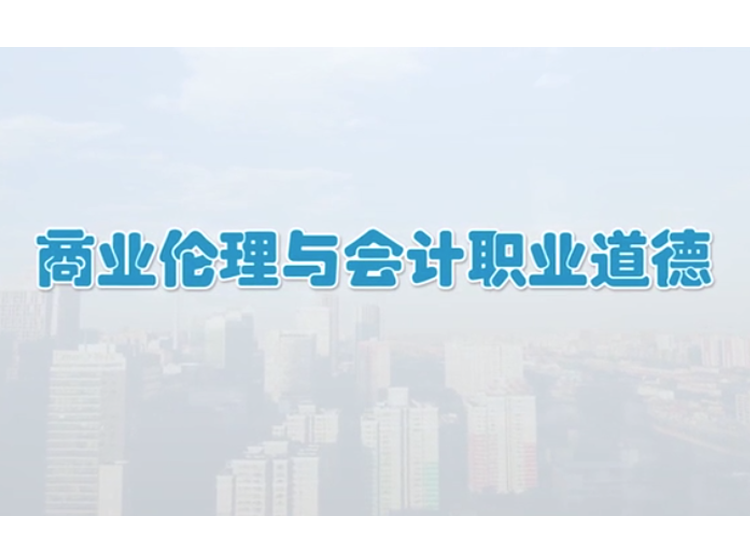
当前课程知识点:Five Disciplines of Management Quality and Ability —— Follow Me to Learn Management > Course Introduction: Understanding Management and Management Science > 0.8 Case Study: Management Enlightenment of Journey to the West Team > 0.8 Case Study: Management Enlightenment of Journey to the West Team
返回《Five Disciplines of Management Quality and Ability —— Follow Me to Learn Management》慕课在线视频课程列表
返回《Five Disciplines of Management Quality and Ability —— Follow Me to Learn Management》慕课在线视频列表
大家好
这一次课
我们来聊一聊
西游记团队
以及对于提升管理素质与能力的几点启示
我在给很多企业做培训时
都会提到西游记这个团队
我认为西游记这个团队是
中国古代最优秀的一个项目团队
西天取经那么复杂
那么困难的一项任务
这个团队能够很好地完成
它当然是一个非常优秀的团队
我们说
唐僧就是这个项目团队
最优秀的管理者和领导者
也许有人会有不同的观点
唐僧为什么算一个优秀的管理者
其实大家冷静思考一下
你就会发现
在西游记这个团队里
除唐僧之外任何一个人
是绝对不可能
领大家去完成西天取经任务的
从管理学原理的角度去分析
我们会发现
管理者应该具备的素质与能力
唐僧都具备了
首先 作为一个优秀的管理者
我们应该具备的第一个素质和条件是什么
你一定要知道团队前进的目标和方向在哪里
唐僧知道西天有经取
这个目标和方向是没有错的
唐僧准确地把握了团队的前进目标和方向
他具备了管理者
应该具备的第一个素质和条件
作为一个优秀管理者
我们必须具备第二个素质和条件是什么呢
一旦目标确定下来以后
你必须带领着你的团队
坚定不移地去实现这个目标
在西天取经的路途中
其他成员都有过不同程度的思想上的动摇
唯有唐僧一直坚定不移地
带领着大家朝着目标和方向前进
因此说
唐僧具备了一个优秀管理者
必须要具备的第二个素质和条件
在完成目标的过程中坚定不移
作为一个优秀管理者
我们必须具备的第三个素质和条件是什么呢
高超的用人艺术和技巧
大家可以看到
唐僧对待孙悟空
采取的是一种怎样的管理方式呢
首先是从五指山下把孙悟空解救出来
让他有一颗感恩的心
但是像孙悟空这种牛人
我们在现实生活也碰到不少
他今天是知道感恩
明天可能就忘记
所以唐僧还靠什么约束他呢 紧箍咒
因此他对待孙悟空
实际上是一种恩威并施的方法
我们说
能够把像孙悟空这样的牛人管理得这么到位
他难道不是一个优秀管理者吗
因此我们说唐僧具备了优秀管理者
必须具备的第三个素质和条件
高超的用人艺术和技巧
作为一个优秀管理者
必须具备第四个素质和条件是什么呢
合理分工 用人所长
有人曾写了一本书 说
孙悟空是一个优秀员工
大家都表示赞同
因为在西游记这个团队里面
如果没有像孙悟空这种 业务尖子
西天取经的任务是不可能完成的
后来又有人写了一本书 说
沙和尚是一个优秀员工
大家想想也对呀
如果没有像沙和尚的这种任劳任怨
做最粗最笨活的人
西天取经的任务也是不可能完成的
所以他也是一个优秀员工
后来又有人写了一本书 说
猪八戒也是优秀员工
大家就开始有争议了
好吃懒做的猪八戒怎么会是优秀员工呢
如果我们按照德才兼备的原则去考核他
他确实一条都不符合
首先从能力角度来看
他没有什么真本事 全是假把式
我们再从道德品质角度来看
他特别好色 动不动就要回高老庄
所以如果按照德才兼备原则去考核他
他一条都不符合
但是我们大家思考一下
在西游记这个团队里面
少了猪八戒
西天取经的任务能够完成吗
我认为不能
道理很简单
少了猪八戒 孙悟空就待不下去
因为孙悟空每次最郁闷的时候
他是靠什么方式去排解他内心的苦闷呢
就是去捉弄猪八戒
他拿唐僧是没有一点办法的
如果他欺负沙和尚又有什么意思呢
猪八戒在这个团队里面
其实充当了一个润滑剂的作用
因此他也不可缺少
也是一个优秀员工
为什么在这个团队每个人都是优秀员工呢
因为每个人做的都是
最符合自己能力类型的工作
如果我们把他们几个位置换一换
让沙和尚去干孙悟空的事情
让孙悟空去干猪八戒的事情
那么这个团队还是优秀团队吗
当然不是
所以我们可以看到
唐僧是根据每个人的特点和长处
进行了合理的分工 用人所长
把每个人放到了最适合他们的岗位上
因此我们说
唐僧具备了管理者必备的第四个素质和条件
合理分工 用人所长
大家可以看到
在西天取经的路上
当遇到一些靠自己团队的力量
无能为力去对付的妖魔鬼怪时
唐僧总请来各路神仙好汉
因此我们说
唐僧是一个优秀的资源整合者
作为一个优秀管理者
我们还必须要具备的
第五个素质和条件是什么呢
就是领导的支持和坚强后盾
唐僧的顶头上司是谁
如来和观音
他们一直是唐僧坚强的后盾
请大家思考一下
作为管理者
如果我们这几方面的条件和素质都具备了
那么我们是不是一个优秀的管理者
从西游记这个团队 从唐僧身上
对于管理者具有哪些启示呢
作为现代管理者
我们如何去超越唐僧
成为一个新时代
具有现代管理理念的优秀管理者呢
从下次课起
我们将从五个方面
同大家来聊一聊提升管理素质和能力的五项修炼
第一项修炼 审时度势 科学决策
第二项修炼 积极态度 高度责任
第三项修炼 高效组织 优秀文化
第四项修炼 人员配备 有效激励
第五项修炼 卓越领导 变革创新
在这次课结束前
给大家留下一个思考题
请大家 用一用
如果要从唐僧 曹操 宋江三人中
推选一位作为你的上司
你会推选谁 为什么
关于思考题的答案
我们将在课程互动讨论区同大家一起讨论
并给出我们的观点
好 这次课就到这里 下次课见
-0.1 What is Management: The Secret of Management is to Borrow Resources
--0.1 What is Management: The Secret of Management is to Borrow Resources
--0.1 What is Management: The Secret of Management is to Borrow Resources
--0.1 What is Management: The Secret of Management is to Borrow Resources
-0.2 Natural Attribute and Social Attribute of Management
--0.2 Natural Attribute and Social Attribute of Management
--0.2 Natural Attribute and Social Attribute of Management
--0.2 Natural Attribute and Social Attribute of Management
-0.3 The Scientificity and Artistry of Management
--0.3 The Scientificity and Artistry of Management
--0.3 The Scientificity and Artistry of Management
--0.3 The Scientificity and Artistry of Management
-0.4 Management Functions, Skills and Roles
--0.4 Management Functions, Skills and Roles
--0.4 Management Functions, Skills and Roles
--0.4 Management Functions, Skills and Roles
-0.5 Case Study: Personal Excellence Doesn’t Mean Much
--0.5 Case Study: Personal Excellence Doesn’t Mean Much
--0.5 Case Study: Personal Excellence Doesn’t Mean Much
--0.5 Case Study: Personal Excellence Doesn’t Mean Much
-0.6 Centennial Management Context (Ⅰ)
--0.6 Centennial Management Context (Ⅰ)
--0.6 Centennial Management Context (Ⅰ)
--0.6 Centennial Management Context (Ⅰ)
-0.7 Centennial Management Context (Ⅱ)
--0.7 Centennial Management Context (Ⅱ)
--0.7 Centennial Management Context (Ⅱ)
--0.7 Centennial Management Context (Ⅱ)
-0.8 Case Study: Management Enlightenment of Journey to the West Team
--0.8 Case Study: Management Enlightenment of Journey to the West Team
--0.8 Case Study: Management Enlightenment of Journey to the West Team
--0.8 Case Study: Management Enlightenment of Journey to the West Team
-Course Introduction Unit Test
-1.1 Insight into the General Trend of the Environment (Ⅰ): PEST Method
--1.1 Insight into the General Trend of the Environment (Ⅰ): PEST Method
--1.1 Insight into the General Trend of the Environment (Ⅰ): PEST Method
--1.1 Insight into the General Trend of the Environment (Ⅰ): PEST Method
-1.2 Insight into the General trend of the Environment (Ⅱ): Porter’s Five Forces Model
--1.2 Insight into the General trend of the Environment (Ⅱ): Porter’s Five Forces Model
--1.2 Insight into the General trend of the Environment (Ⅱ): Porter’s Five Forces Model
--1.2 Insight into the General trend of the Environment (Ⅱ): Porter’s Five Forces Model
-1.3 Case Study: How McDonald’s Entered Chinese Market
--1.3 Case Study: How McDonald’s Entered Chinese Market
--1.3 Case Study: How McDonald’s Entered Chinese Market
--1.3 Case Study: How McDonald’s Entered Chinese Market
-1.4 Strategic Decision Analysis Tools: SWOT Analysis and BCG Matrix
--1.4 Strategic Decision Analysis Tools: SWOT Analysis and BCG Matrix
--1.4 Strategic Decision Analysis Tools: SWOT Analysis and BCG Matrix
--1.4 Strategic Decision Analysis Tools: SWOT Analysis and BCG Matrix
-1.5 Group Decision-making Tools and Methods: Delphi Method and Brainstorming Method
--1.5 Group Decision-making Tools and Methods: Delphi Method and Brainstorming Method
--1.5 Group Decision-making Tools and Methods: Delphi Method and Brainstorming Method
--1.5 Group Decision-making Tools and Methods: Delphi Method and Brainstorming Method
-The First Unit Test
-2.1 Attitude Determines Everything
--2.1 Attitude Determines Everything
--2.1 Attitude Determines Everything
--2.1 Attitude Determines Everything
-2.2 The Components and Formation of Attitude
--2.2 The Components and Formation of Attitude
--2.2 The Components and Formation of Attitude
--2.2 The Components and Formation of Attitude
-2.3 How to Change the Attitude of Employees
--2.3 How to Change the Attitude of Employees
--2.3 How to Change the Attitude of Employees
--2.3 How to Change the Attitude of Employees
-2.4 Responsibility and Efficient Execution
--2.4 Responsibility and Efficient Execution
--2.4 Responsibility and Efficient Execution
--2.4 Responsibility and Efficient Execution
-2.5 Ethics and Core Values
-The Second Unit Test
-3.1 Basic Issues in Organization
--3.1 Basic Issues in Organization
--3.1 Basic Issues in Organization
--3.1 Basic Issues in Organization
-3.2 How to Establish an Effective Organizational Structure (Ⅰ)
--3.2 How to Establish an Effective Organizational Structure (Ⅰ)
--3.2 How to Establish an Effective Organizational Structure (Ⅰ)
--3.2 How to Establish an Effective Organizational Structure (Ⅰ)
-3.3 How to Establish an Effective Organizational Structure (Ⅱ)
--3.3 How to Establish an Effective Organizational Structure (Ⅱ)
--3.3 How to Establish an Effective Organizational Structure (Ⅱ)
--3.3 How to Establish an Effective Organizational Structure (Ⅱ)
-3.4 Case Study: The Responsibility of the Sales Department
--3.4 Case Study: The Responsibility of the Sales Department
--3.4 Case Study: The Responsibility of the Sales Department
--3.4 Case Study: The Responsibility of the Sales Department
-3.5 Effective Communication Skills
--3.5 Effective Communication Skills
--3.5 Effective Communication Skills
--3.5 Effective Communication Skills
-3.6 Organizational Cultural Function and Content
--3.6 Organizational Cultural Function and Content
--3.6 Organizational Cultural Function and Content
--3.6 Organizational Cultural Function and Content
-3.7 Case Study: Resignation (Ⅰ)
--3.7 Case Study: Resignation (Ⅰ)
--3.7 Case Study: Resignation (Ⅰ)
--3.7 Case Study: Resignation (Ⅰ)
-3.8 Case Study: Resignation (Ⅱ)
--3.8 Case Study: Resignation (Ⅱ)
--3.8 Case Study: Resignation (Ⅱ)
--3.8 Case Study: Resignation (Ⅱ)
-The Third Discipline Unit Test
-4.1 How to Recruit Good Staff
--4.1 How to Recruit Good Staff
--4.1 How to Recruit Good Staff
--4.1 How to Recruit Good Staff
-4.2 Motivate Employees’ Work Potential
--4.2 Motivate Employees’ Work Potential
--4.2 Motivate Employees’ Work Potential
--4.2 Motivate Employees’ Work Potential
-4.3 Content-based Incentive Theory (Ⅰ): Hierarchical Theory and ERG theory
--4.3 Content-based Incentive Theory (Ⅰ): Hierarchical Theory and ERG theory
--4.3 Content-based Incentive Theory (Ⅰ): Hierarchical Theory and ERG theory
--4.3 Content-based Incentive Theory (Ⅰ): Hierarchical Theory and ERG theory
-4.4 Content-based Incentive Theory (Ⅱ): Motivator-Hygiene Theory
--4.4 Content-based Incentive Theory (Ⅱ): Motivator-Hygiene Theory
--4.4 Content-based Incentive Theory (Ⅱ): Motivator-Hygiene Theory
--4.4 Content-based Incentive Theory (Ⅱ): Motivator-Hygiene Theory
-4.5 Process-based Incentive theory: Expectation Theory and Fairness Theory
--4.5 Process-based Incentive theory: Expectation Theory and Fairness Theory
--4.5 Process-based Incentive theory: Expectation Theory and Fairness Theory
--4.5 Process-based Incentive theory: Expectation Theory and Fairness Theory
-4.6 Behavioral Transformation Incentive Theory: Reinforcement Theory
--4.6 Behavioral Transformation Incentive Theory: Reinforcement Theory
--4.6 Behavioral Transformation Incentive Theory: Reinforcement Theory
--4.6 Behavioral Transformation Incentive Theory: Reinforcement Theory
-The Fourth Unit Test
-5.1 The Essence and Tasks of Effective Leaders
--5.1 The Essence and Tasks of Effective Leaders
--5.1 The Essence and Tasks of Effective Leaders
--5.1 The Essence and Tasks of Effective Leaders
-5.2 Trait Theory of Leadership
--5.2 Trait Theory of Leadership
--5.2 Trait Theory of Leadership
--5.2 Trait Theory of Leadership
-5.3 Leadership Behavior Theory
--5.3 Leadership Behavior Theory
--5.3 Leadership Behavior Theory
--5.3 Leadership Behavior Theory
-5.4 Leadership Situation Theory
--5.4 Leadership Situation Theory
--5.4 Leadership Situation Theory
--5.4 Leadership Situation Theory
-5.5 Innovation and Entrepreneurship
--5.5 Innovation and Entrepreneurship
--5.5 Innovation and Entrepreneurship
--5.5 Innovation and Entrepreneurship
-5.6 Two New Trends of Innovation
--5.6 Two New Trends of Innovation
--5.6 Two New Trends of Innovation
--5.6 Two New Trends of Innovation
-The Fifth Unit Test
-Final Exam

